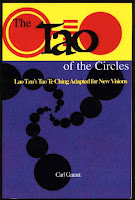Conceptual impressions surrounding this post have yet to be substantiated, corroborated, confirmed or woven into a larger argument, context or network. Objective: To generate symbolic links between scientific discovery, design awareness and consciousness.
"The universe cannot be read until we have learned the language and become familiar with the characters in which it is written. It is written in mathematical language, and the letters are triangles, circles and other geometrical figures, without which means it is humanly impossible to comprehend a single word. Without these, one is wandering about in a dark labyrinth."
Galileo Galilei
* * *
A designed language (DL) tells a symbolic story of balance, experience, definition and measure.
A designed language focuses upon the moment of meaningful timelessness for purposes of transition and transformation.
A designed language is both informative and revealing, measurable and immeasurable, linear and conceptual.
A designed language is both literal and figurative, generated by an intuitive imagination rooted in subjective and insightful perception/observation, i.e. awareness.
A designed language expands conscious awareness by means of the subconscious both in meaning and purpose.
A designed language remains unspoken.
A designed language creates a special attraction through coherent resonance exercised in relative space/time in order to be made manifest/apparent.
A designed language incorporates its own set of symbols for purposes of growth, expansion and interaction.
A designed language assists in the timeless quest to know, understand and experience balance and harmony.
A designed language brings energy, light and information to greater consciousness by means of symbol and metaphor.
A designed language establishes the link between meaning and purpose.
A designed language creates and harbors the most dynamic circumstances solely for the transition of change<>energy (CE) into light, energy and information.
A designed language is metaphysical in origin and practice. Design is an immeasurable and timeless language both in context and content.
The intuition gives rise to patterns of attraction (fractal, concepts). The imagination gives rise to its formation (holographic, ideas) and geometry gives rise to its structure tangible and/or intangible.
A designed language is subjective in content and context, a feeling sensed between the emotions of the heart and the intelligence of the mind. Each event and experience is unique to the perceiver/observer. There is no commonality shared except for experiencing the existence of a designed presence.
Design creates and harbors a personal symbolic language that is logical, semiotic, implicative, cognitive, purposeful and meaningful.
We each possess a unique design language of our own that rests at a point in timelessness between the tangible and the intangible.
Designs are created in order to hear the sound of one's own silence.
Design brings forth an embodiment of knowing ever spoken but rarely heard.
Design makes Life incredibly simple through the use of signs,, symbols, metaphor and analogy.
* * *
A designed language is a symbolic system that conveys balance, transformation, and growth. It is a timeless tool for transition, blending the literal and figurative, the measurable and immeasurable. Rooted in intuition and subjective perception, it reveals deeper meanings and connects the conscious mind with the subconscious. This unspoken language, formed through unique patterns and symbols, fosters awareness and understanding by linking meaning and purpose.
Through its metaphysical origins, a designed language uses symbols and metaphors to bring energy, light, and information into greater consciousness. It creates resonance and attraction in space and time, facilitating dynamic change and transformation. Personal and subjective, it bridges the emotions of the heart with the intelligence of the mind, offering everyone a unique experience. Ultimately, a designed language embodies the silent expression of knowing, existing in the space between the tangible and intangible, and offering a path to deeper understanding and harmony. It is a tool for personal growth, interaction, and the eternal quest for balance and meaning.
* * *
* * *
Be assured you will not discover all the answers to your inquiries here. Continue to investigate into your role as observer and creator in a design of your own making. Be aware of the by-products and outcomes that surround your every choice and decision.
* * *
To know is your own creation."
Anonymous
* * *
Edited: 03.02.2022, 03.03.2022, 03.19.2022, 04.16.2022, 08.23.2022, 12.25.2022, 02.14.2023, 06.19.2023, 11.28.2023, 01.22.2024, 02.03.2024, 03.08.2024, 12.15.2024, 12.27.2024, 02.02.2025, 02.07.2025, 05.31.2025
Find your truth. Know your mind. Follow your heart. Love eternal will not be denied. Discernment is an integral part of self-mastery. You may share this post as long as author, copyright and URL https://sagariandesignnetwork.blogspot.com is included as the resource and shared on a non-commercial no charge basis. Please note … posts are continually being edited over time. Copyright © 2023 C.G. Garant. All Rights Reserved. (Fair use notice) You are also invited to visit https://designconsciousness.blogspot.com/ and URL https://designmetaphysics.blogspot.com/ and https://www.pinterest.com








No comments:
Post a Comment